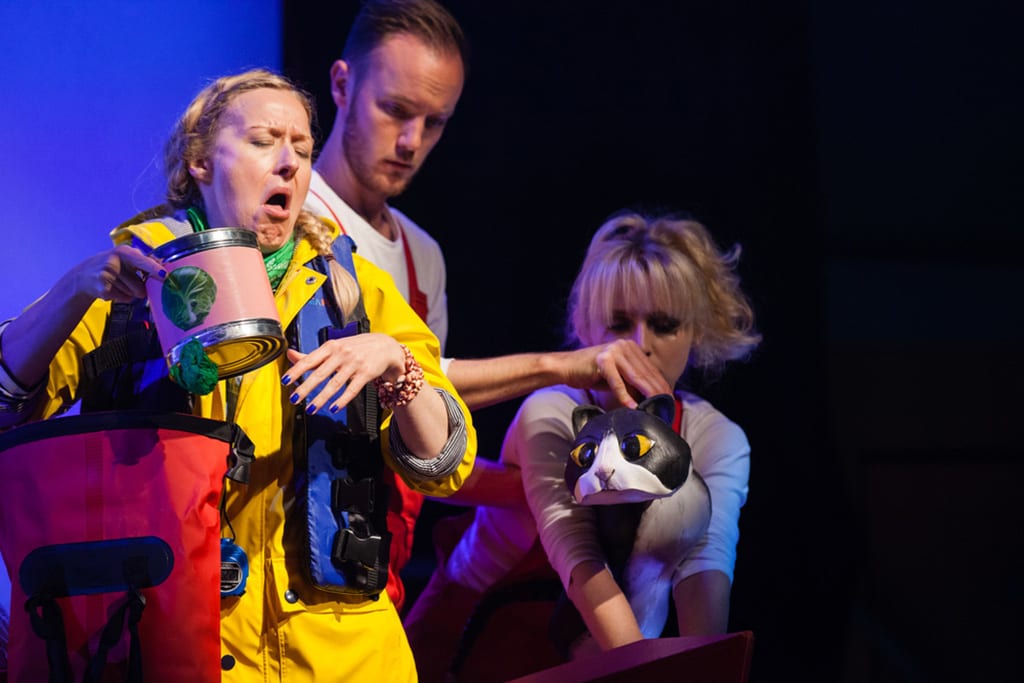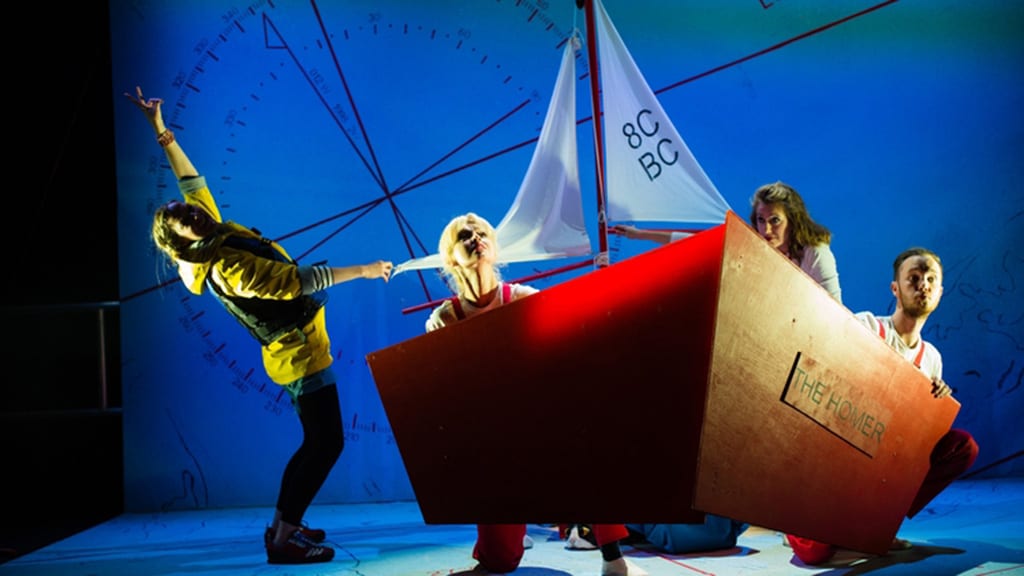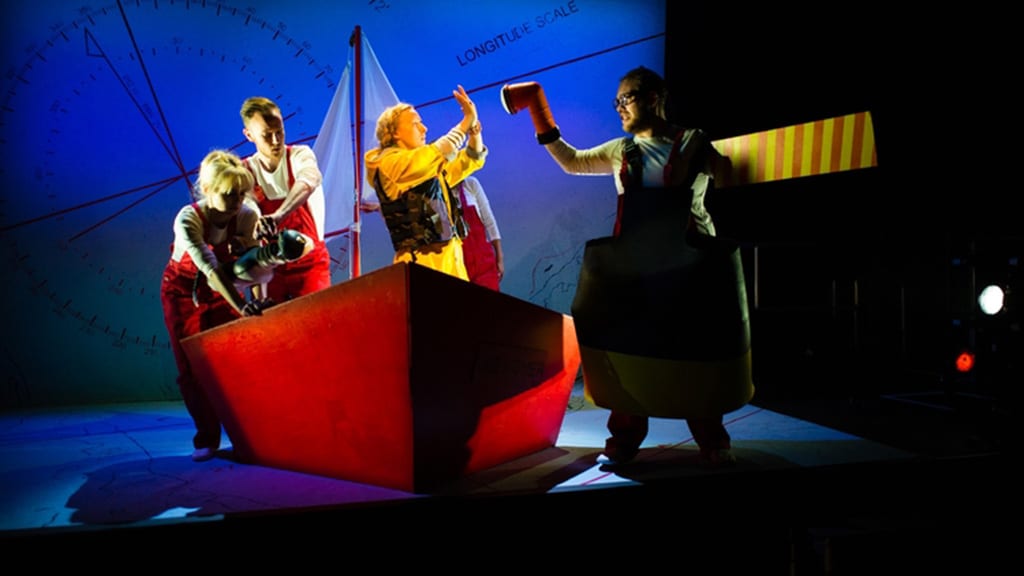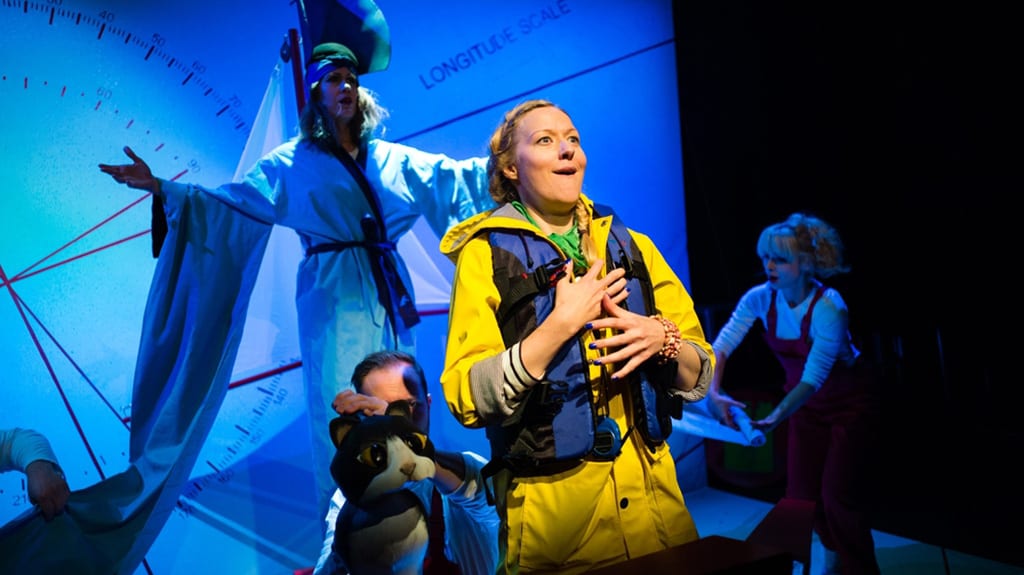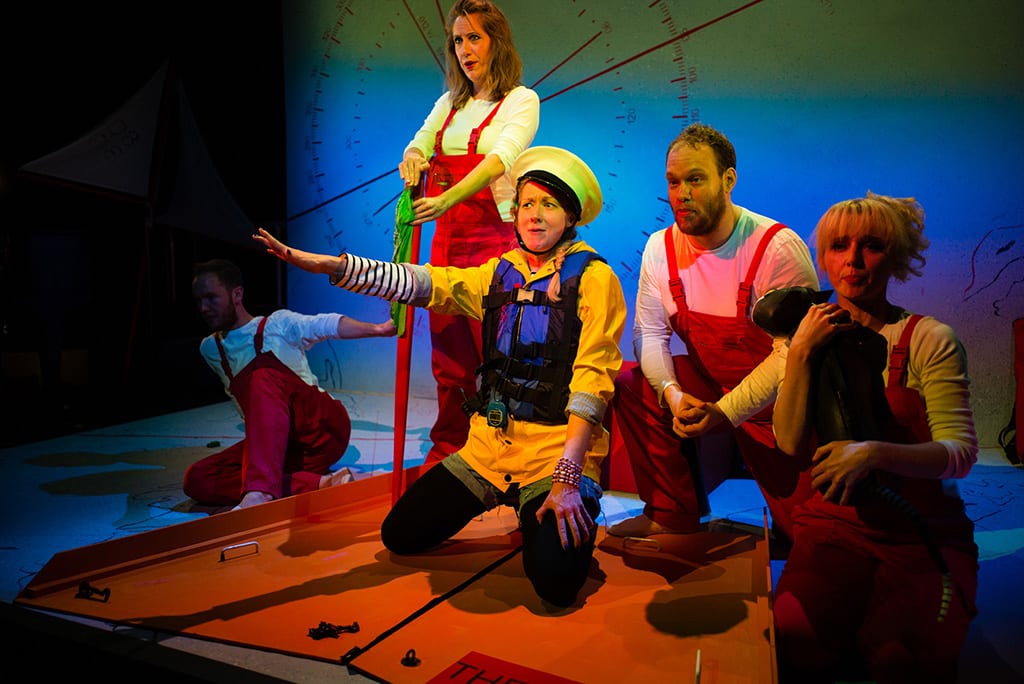The opera opens up with a lively tune, with five singers, as well as live piano and brass in the background. Behind the boat, inventively made from two pieces of red-coloured wood put together and an iron cross with some small sails, there is a geographical map of the North Pole, with longitude, the magnetic north pole (1998 position) and some rough outlines of the northernmost reaches of Canada and the Norwegian islands of Svalbard. On the boat is inscribed “The Homer”, a reference to Homer’s “Odyssey” from which the show is inspired.
Ulla is trying to sail around the world in her little boat accompanied by her cat, Binnacle – a puppet in the show. She is stuck in the doldrums, where wind is scarce and rarely strong. She complains about how she cannot stay there any longer and that she should be already home. Her food is becoming scarce, and while her next meal is Brussels sprouts, she complains about how much she hates them, throwing small green soft toys into the audience, animating the younger audience.
As her voyage goes on, she encounters monsoons and tempests, with changes in the lightning to reflect the variations in weather. She also meets Cy-ops, a one-eyed robotic customs official, the Goddess of the Seas wearing a beautifully wavy kimono, and Sylla, a dangerous sea creature. The later lives in rubbish that has turned radioactive since being dumped into the ocean. The whole scene with Sylla sends an ecological message, but it is the Goddess of the Seas who really punishes Ulla for throwing her empty bottles of water into the sea.
The opera was sung and performed to a high standard, aided greatly by brilliant musicians, and this reminded me of operas such as “Carmen”. I really enjoyed the fact that, despite the many obstacles on her journey, Ulla would not be defeated and carried on with courage, using her motto “to thrive, to seek, to find”. At the end of the show, it felt like I had been on a great adventure.

